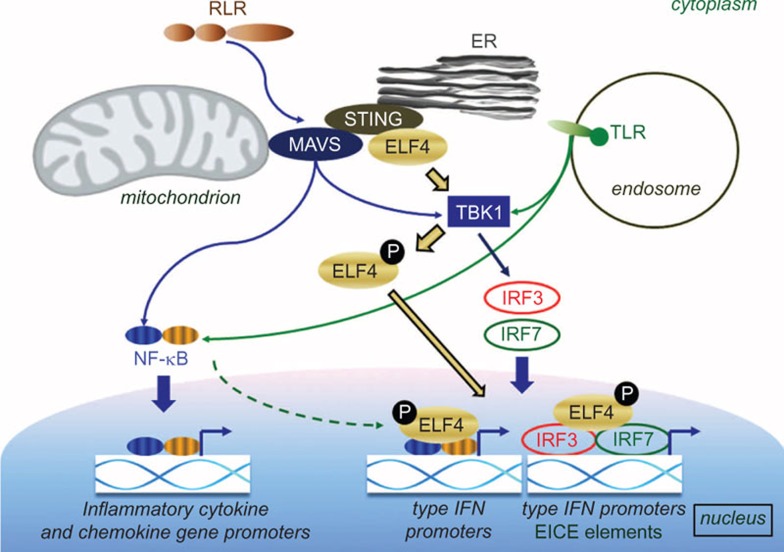Figure 1.
The role of ELF4 in type I IFN signaling. Cellular signals induced by the specific activation of TLRs or RLRs are transmitted through the MAVS/STING pathway to NF-κB and TBK1. The subsequent phosphorylation of NF-κB leads to its nuclear translocation and the expressional control of inflammatory and chemokine genes. TBK1 is an essential cytoplasmic kinase, which upon PRR activation phosphorylates the transcription factors IRF3 and IRF7. Activated IRFs move to the nucleus and induce type I IFN production. The PRR-induced interaction of ELF4 with STING results in its phosphorylation by TBK1. Activated ELF4 is then translocated to the nucleus where it increases the binding affinity of IRF3, IRF7 and the NF-κB subunit p65 to type I IFN promoters through binding of IRF3/7 to the EICE elements. IFN, interferon; IRF, interferon regulatory factor; PRR, pattern recognition receptor; RLR, RIG-I-like receptor; STING, stimulator of interferon gene; TBK, TANK-binding kinase; TLR, Toll-like receptors.

